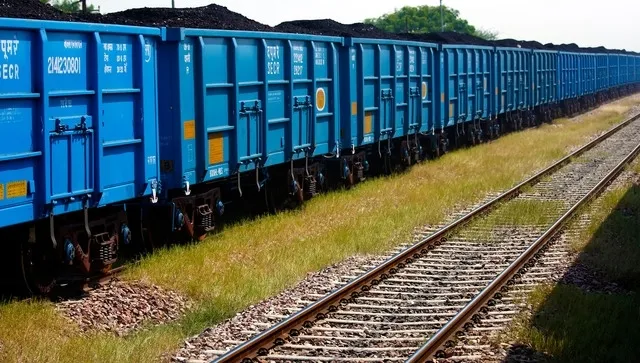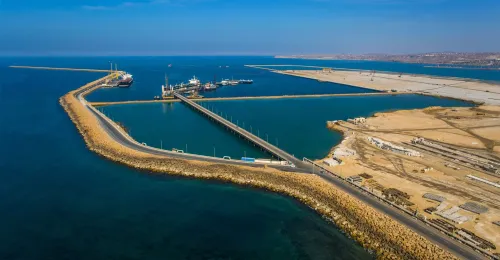Has Indian Railways Surpassed 1 Billion Tonne Freight Loading in FY26?

Synopsis
Key Takeaways
- Indian Railways has surpassed 1 billion tonnes in freight loading.
- Coal remains the largest contributor to freight at 505 MT.
- Daily loading has improved to 4.4 MT compared to last year.
- New reforms aim to enhance cement logistics efficiency.
- The transition to rail transport supports sustainable practices.
New Delhi, Nov 22 (NationPress) The freight operations of Indian Railways are significantly bolstering India’s economic framework, as this year's total loading has exceeded the 1 billion tonne threshold, reaching 1020 million tonnes (MT), as reported by the Ministry of Railways on Saturday.
This achievement showcases robust contributions across various sectors. The largest share came from coal at 505 MT, followed by iron ore at 115 MT, cement at 92 MT, container traffic at 59 MT, pig iron & finished steel at 47 MT, fertilisers at 42 MT, mineral oil at 32 MT, foodgrains at 30 MT, raw materials for steel plants at approximately 20 MT, and other goods totaling 74 MT as of November 19.
Daily loading remains robust at around 4.4 MT, which is an increase from 4.2 MT last year, highlighting enhanced operational effectiveness and persistent demand, according to the ministry.
The freight loading from April to October reinforces this positive trend, reaching 935.1 MT in 2025, compared to 906.9 MT during the same timeframe last year, indicating a strong year-on-year growth.
“This ongoing progress, along with enhanced daily loading figures, underscores the capacity of Railways to facilitate India’s industrial growth and infrastructure enhancement,” the ministry stated.
Acknowledging the pivotal role of cement in the nation’s infrastructure development, Railways has made significant strides to improve logistics in this sector.
The introduction of comprehensive reforms, including the Policy for Bulk Cement Terminals and streamlined rates for bulk cement transportation in containers, is a strategic move aimed at modernizing cement logistics.
These initiatives are designed to boost bulk handling capacity, minimize transit times, and reduce logistics costs, benefiting both industry stakeholders and consumers, while enhancing overall supply chain efficiency.
Such targeted strategies are driving transformative changes within the sector.
Transitioning bulk goods transport to rail offers numerous advantages that extend beyond financial outcomes. It helps in lowering carbon emissions, alleviating traffic congestion on highways, and providing access to more sustainable logistics solutions for industries, including MSMEs.
These advancements reinforce India’s pledge to sustainable development, aligning freight operations with the nation’s commitment to achieving Net Zero Carbon Emissions and positioning Railways as a pivotal driver of economic and environmental progress, as noted by the Ministry.









